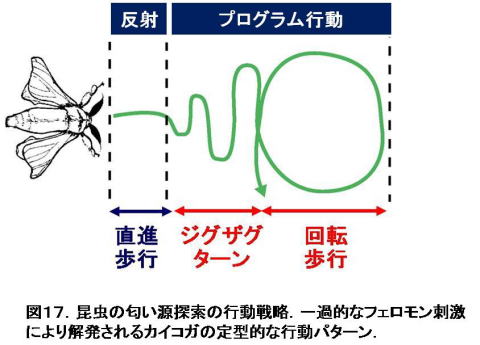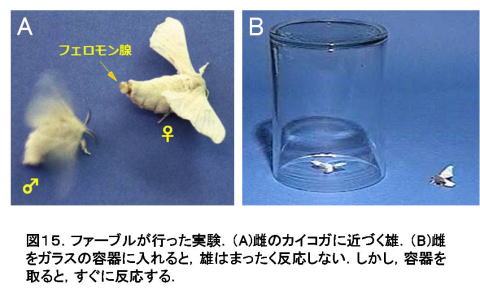back
Odour source localisation is not an easy task. Just try to close your eyes
and find an odour source by only using your nose. Even sniffing does not
make the task for finding a source a few meters away much easier. There
are several problems. One is the gradual adaptation of odorant receptor
neurons during prolonged exposure to an odorant to which they respond.
Thus, the responsiveness of these neurons declines with exposure time.
Another (which can counter the previous one) is the intermittent nature
of odorant exposure in natual environments: Odour molecules are not distributed
homogenously in space but tend to occur in small packets interspersed with
clean air: odour plumes or filaments. This kind of distribution implies
that navigation according to a simple concentration gradient is very difficult.


Insects are capable of orienting efficiently towards odour sources. They make use of the temporal structure of odour plumes contacted by their odour sensors. Closer to an odour source, the frequency of plumes hitting the sensors increases. Behavioural patterns are adjusted to the natural stimulus statistics (see below).
-
Upon odour stimulation, move straight.
-
If the last stimulus has occurred some time ago and there is no subsequent stimulus, a programmed behavioural sequence is triggered: a zig-zagging movement that gradually changes to looping as zig-zag turn amplitudes get larger, unless a stimulus is intercepted again.
This programmed behavioural sequence is repeated as odorants stimulate the animal. However, since filament interception occurs at higher frequency near the odour source, the pattern will be reset and started over again rapidly, leaing to mostly straight line walking. At larger distances from the odour source, highly intermitttent stimulation with conversely result in a pattern with zig-zag tracks and even looping. This behavioural stratery allows insects to orient succesfully toward odour sources with high efficiency.